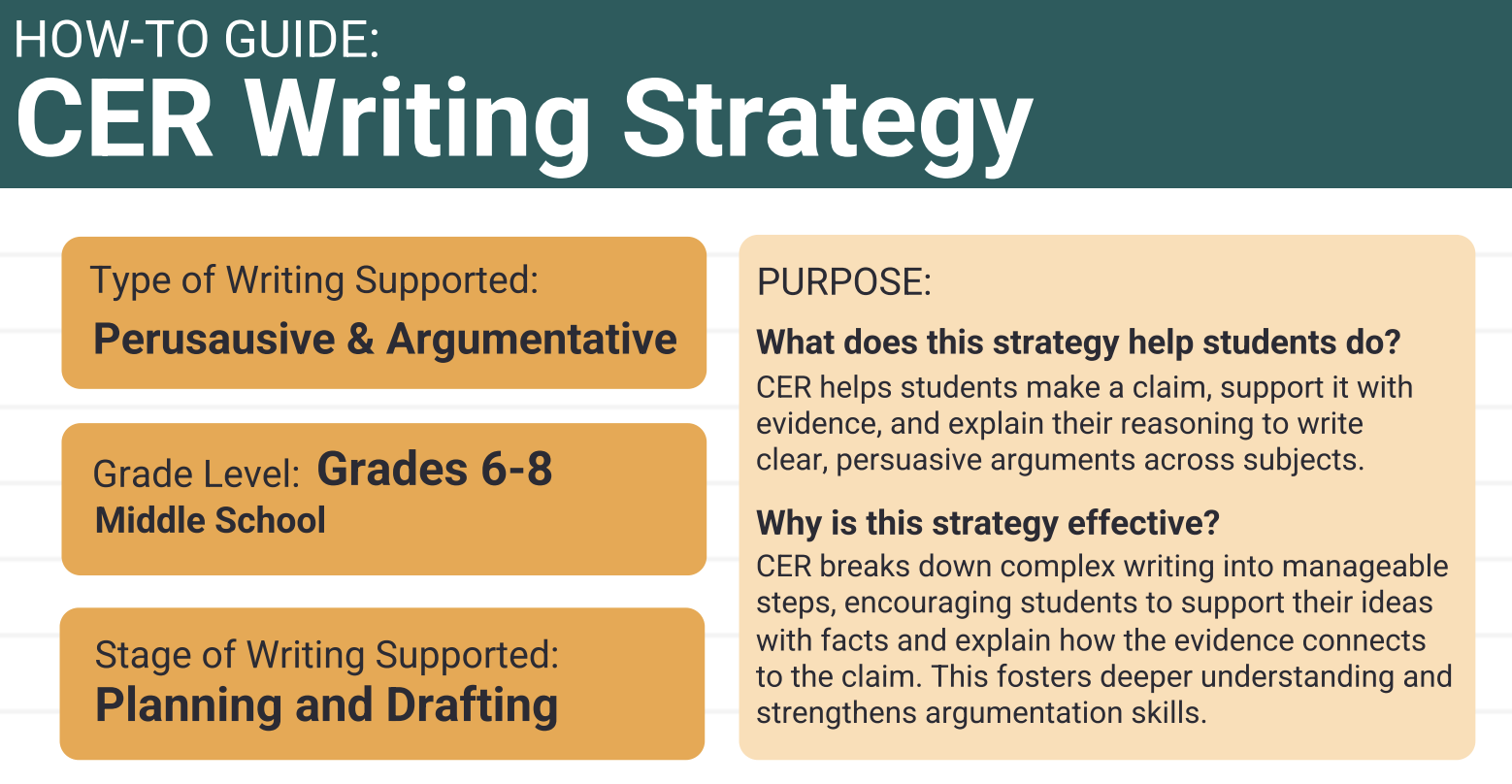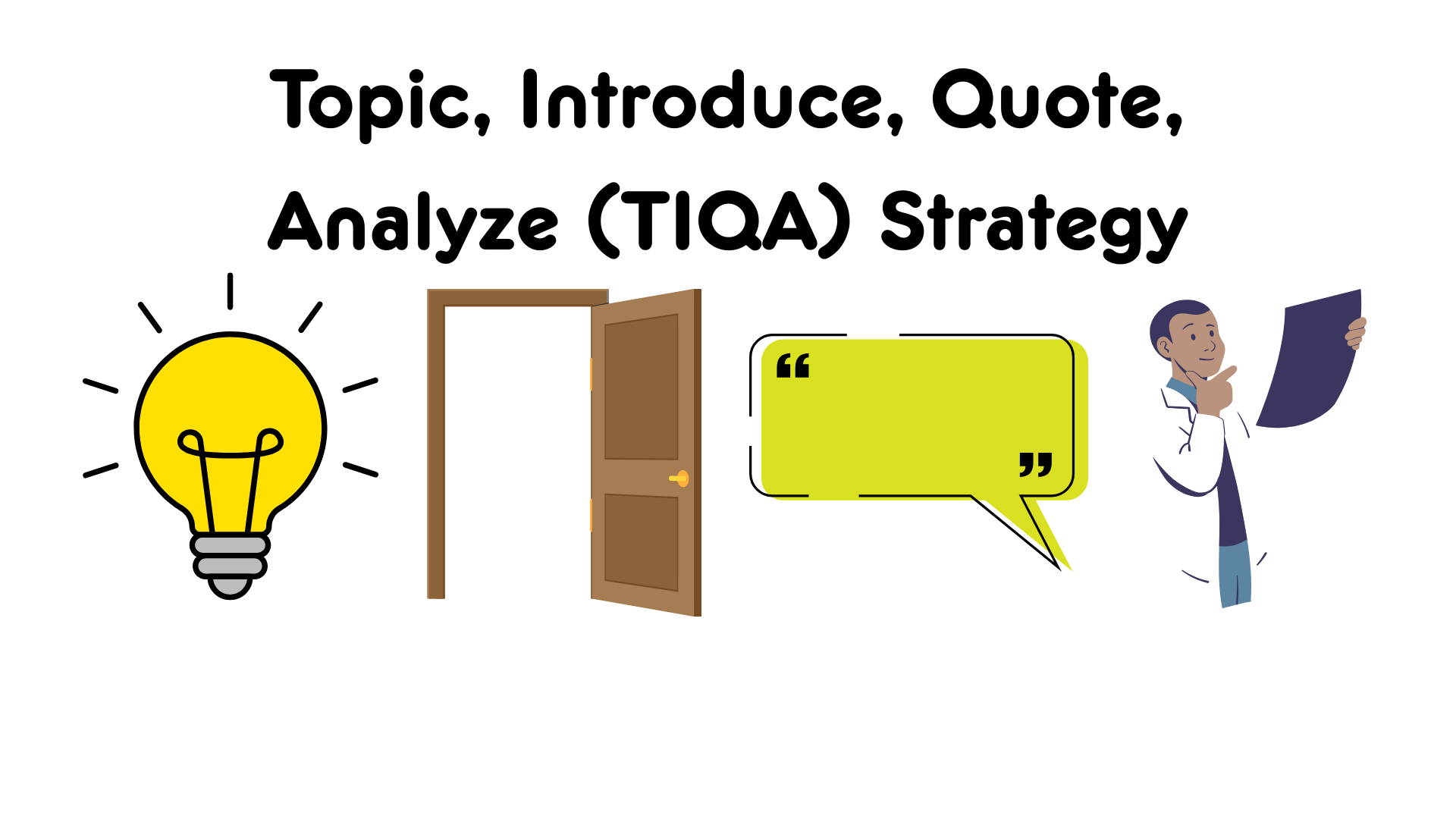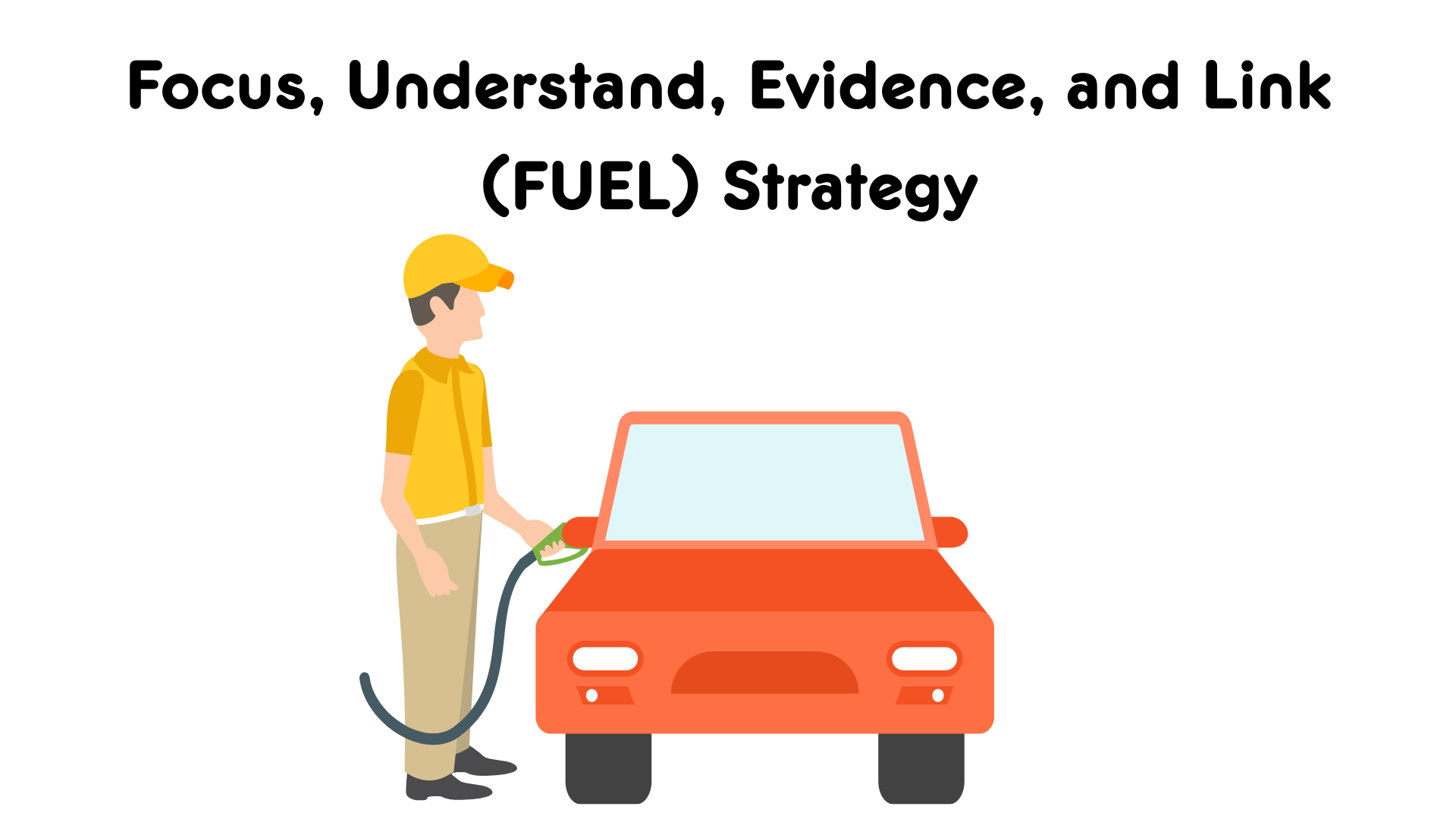Claim, Evidence, Reasoning (CER) Strategy
Strategy Parameters
-
Genre: Persuasive/Argumentative.
-
Grade Level: Middle Grades.
-
Writing Process: Planning, Drafting.
At-A-Glance
CER is a powerful writing and thinking strategy that guides students to construct clear, logical explanations by systematically presenting a claim, supporting it with evidence, and explaining their reasoning. It is effective across subjects like science and social studies, strengthening critical thinking by requiring students to justify their ideas with facts. By breaking down argumentation into manageable steps, CER helps students connect their ideas and develop strong justification skills.
Learn More
Best Practices
-
Do teach each component explicitly, ensuring students understand what a claim, evidence, and reasoning are.
-
Do model CER with think-alouds using simple, relatable examples before moving to academic content.
-
Do use guiding questions to support thinking: What do you believe? What facts support your belief? Why do those facts matter?.
-
Do provide sentence starters to help students structure their writing (e.g., “I believe that…,” “This shows that…”).
-
Do use graphic organizers that separate each CER component to help students plan their writing.
Common Pitfalls
- Don’t skip the reasoning step; it is often where students struggle, but it is critical for developing logical thinking and must be taught and practiced.
- Don’t assume students know how to connect evidence to a claim; this needs explicit instruction and practice.
- Don’t treat CER as a one-time lesson; it should be revisited and reinforced regularly across subjects.
- Don’t use overly complex topics at first; start with accessible, low-stakes prompts to build confidence.
- Don’t correct student reasoning without discussion; use guiding questions to help them refine their own logic.
Implementation Tips
-
Introduce and Model: Start by introducing CER with a question that sparks student engagement and then explain its purpose in writing. Model the strategy using a simple example and a think-aloud, walking through each step—claim, evidence, and reasoning—to show how they turn into a coherent paragraph.
-
Scaffolding and Practice: Scaffold students’ practice by providing a CER chart and sentence starters to guide their thinking and planning. Use fun, low-stakes topics for initial practice and encourage brainstorming in pairs or small groups before writing.
-
Application and Integration: Once students are comfortable with the structure, apply CER to academic subjects like science and social studies to deepen content understanding. This integration reinforces the strategy’s utility and encourages purposeful writing across the curriculum.
-
Refinement and Feedback: Provide feedback through examples, peer review, and one-on-one conferences to help students refine their writing and logical connections. Encourage visual aids and flexible formats to support all learners during this refinement process.





